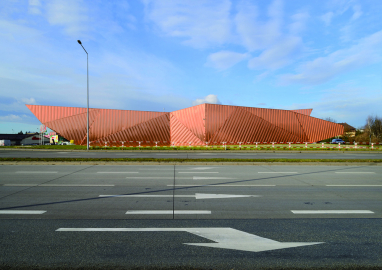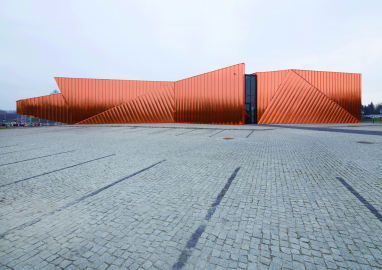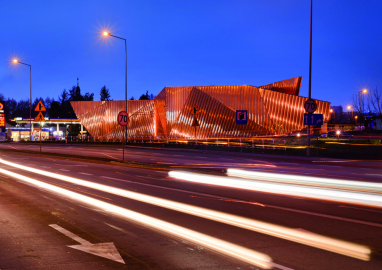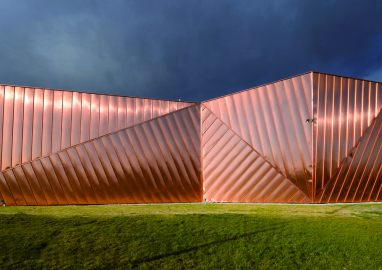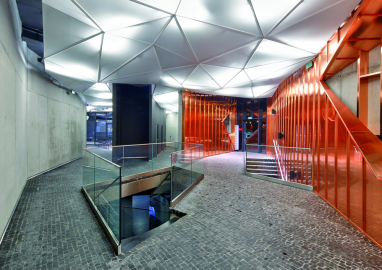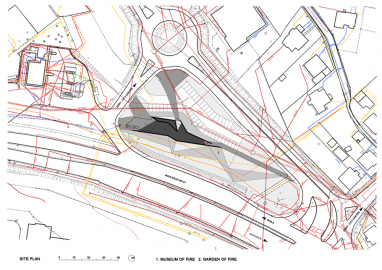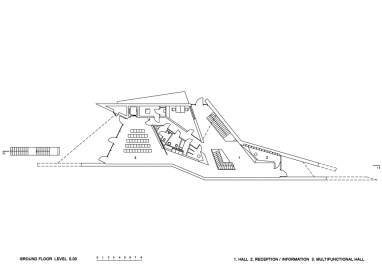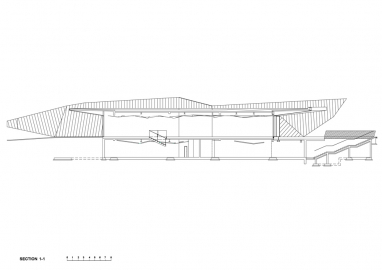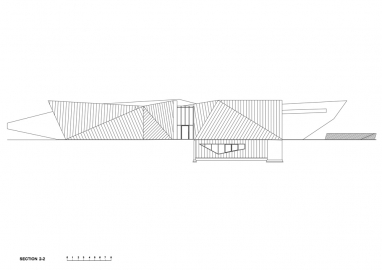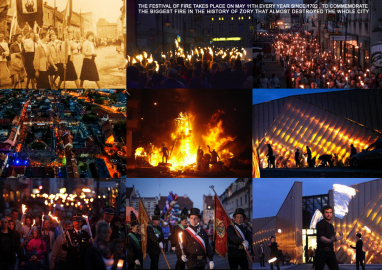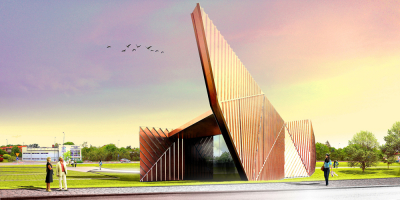Museum of Fire in Żory
The Museum of Fire is a building devoted to the fire in its physical, chemical, historical, sociological and cultural aspects, but also to the role that fire played in the history of Żory.
Designed as a landmark, it hosts multimedia museum and multifunctional exhibition space, but is also used for in-situ art and scenography for dancers or performers.
City of Żory asked us to design a pavilion that would be promoting the city. We started with simple glass structure, but it turned out, that the whole area is full of underground infrastructure – main sewage collectors, main gas pipe – impossible to remove or rebuild. There was a very small and irregular piece of land that we could build on. And then we read, that the name of the city – Żory means in old Polish “fire”, “burnt”. Furthermore on May 11, 1702 it was destroyed by the fire, and since then, every year citizens gather and pray to protect them from fire – after years it became the annual Festival of Fire. We imagined that the strange shape is looking like fire. It was a fundamental idea, that defined design process the form, and the final function of the building. When we showed our client the building looking like fire, he decided that instead of the pavilion we should create a Museum of Fire.
Museum of Fire consists of three independent walls that “swim” next to each other. Their composition and shapes covered with copper plates resemble dancing flames. Walls are cut, cantilevered and bent to achieve dynamic effects. Spaces between the walls are fully glazed forming three entrances, covered with large, extended roofs . Walls are made of architectural concrete, covered on the outside with copper and left untouched inside. The floor is paved with black stone, and continued to the outdoor elements.
There is a multifunctional hall and reception/information on the ground floor and an exhibition hall underground with a multimedia show and exhibits devoted to the phenomenon of fire. With restrooms and technical rooms the program is complete.
Intensive landscaping is surrounding the Museum. The building and the landscape work together create a symbiosis of space consisting of Museum itself, pedestrian paths running through the pavilion and green walkways. There is a Garden of Fire foreseen - an outdoor exhibition space along the Country Road nr 81 that will be used during Festival of Fire, showing works of art, performances and projects devoted to fire.
To express the notion /metaphor of fire we decided to use geometry based on irregular triangles.
All materials has been chosen according to the main topic of the Museum – the fire.
We liked the idea that the copper facade will become green with time – it is a natural process, and in fact patination is oxidation, that is – a very slow burning... But the client was unconvinced and he insisted on fiery color without patina. It took us one year to find solution. We tested all possible copper alloys, painted aluminium, steel, composites, cor-ten. special stainless steel chemically treated to look copper-like but they did not look good enough. Finally we decided to cover copper with transparent , high resistant varnish, similar as it used in car industry, that protects copper from oxidation.
Copper cladding comes from the outer walls inside, as single flames. The black granite paving stones also flow from outside inside. The walls inside are gray and black – the museum is “fiery” outside, but “burnt” inside. The ceiling is based on triangular pattern similar to the basic geometry grid of the building. Its translucent, irregular form resembles smoke over ashes.

